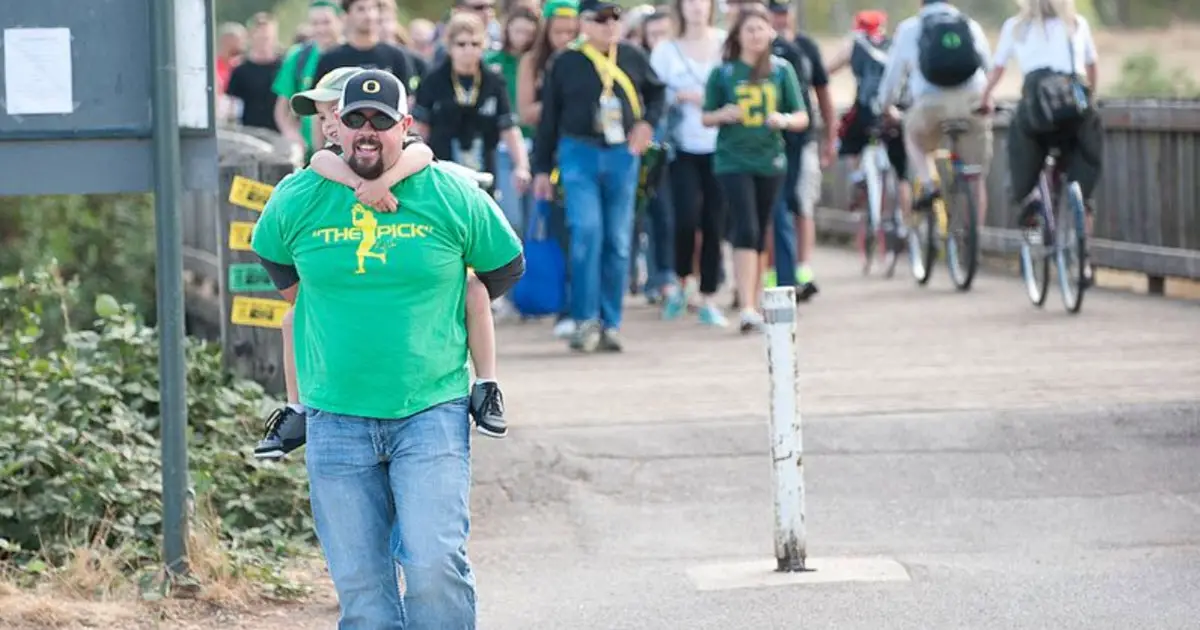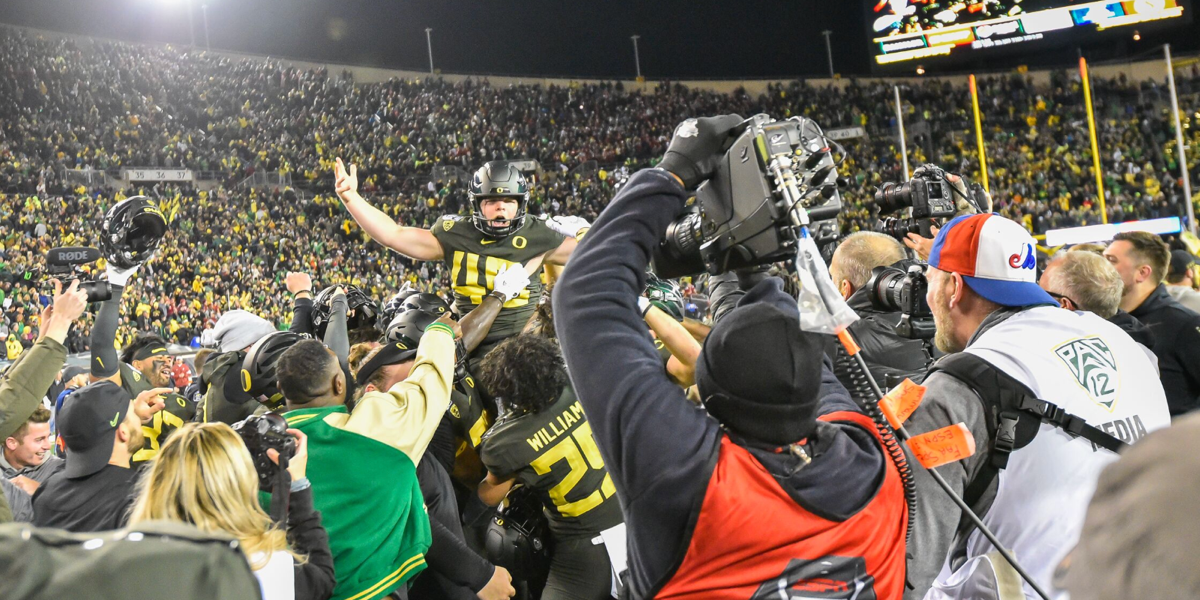In preparation for writing this last winter, before COVID was a household word, I felt the need to take the same walk that hundreds of thousands of Duck fans have made before: the walk across the Willamette.
I began my stroll in the early morning on a Thursday, a strange contrast to my past endeavors on the bridge. It was an uncharacteristically gorgeous day for the winter, the Willamette sparkling underneath beams of sunlight, and the bridge was lined with people despite the early hour. I made my way across the bridge, past the solitary ducks drifting glossily in the rapids of the river, past the giggling young couple who spun in small circles together in the sun, past the ragged resting bicyclists sitting on benches drinking in the warmth.

The bridge to Autzen…
As I made my way through the bare trees reaching up to the sky, a large shape began to reveal itself in the distance. And suddenly, there she was among the trees: Autzen. The massive signature “O” was the first thing to catch my eye, reminding me that student-athlete or not, this was a place for me, too.
I crossed another small wooden bridge, barely noticing the men who stood underneath fishing in the beaming sunlight. And the stadium was now directly in front of me, rising up hundreds of feet above my head.
Autzen Stadium is much more than a football stadium. It is a symbol of the entire state of Oregon, and everything glorious about it.

Incredible experiences at Autzen …
It’s almost unthinkable to think of Autzen in any sort of form other than its current one, but the original plans for the stadium were significantly different from the grandiose result we have today.
The first phase of the design plans included space for 400 cars! At the end of each end zone, the space was to be left open, with small, staggered ramps installed, creating the world’s first and only drive-in football experience. Not surprisingly, it didn’t take long to realize that that space could hold more ticket buyers if cars weren’t included in the seating area, so the idea didn’t make it past the first phase.
Personally, I find that one of the most rewarding parts of the Oregon football experience is the community experience. Standing one among 50,000 people, forgetting the stresses and weights of daily life, screaming “Shout!” into the cold night air, and returning home again to the comforting escape of warm blankets will forever be memories that I cherish.

The fans rush the field after a hard-fought win vs Washington State.
You can read more about the suggested Autzen plans from the 1960s in an article by Benzduck on his website Duck Downs, which is featured in FishDuck’s Oregon Football Repository in the History of Oregon Football: The 1888 to 1969 Foundation Years section. This is one article among many that provide in-depth insider knowledge on the history of Oregon football.
Autzen stadium is not only a staple of the Eugene and the University of Oregon community, but also a symbol of NCAA football across the nation.
Oregon football is in the middle of a period of change with a promising future, but regardless of what happens the time to come, Autzen’s extravagance ensures that it will always be more than a stadium.
What is Autzen to you?
Zeke Lerner-Wood
Eugene, Oregon
Top Photo: Kevin Cline
 Bob Rodes, the FishDuck.com Volunteer editor for this article, is an IT analyst, software developer and amateur classical pianist in Manchester, Tennessee.
Bob Rodes, the FishDuck.com Volunteer editor for this article, is an IT analyst, software developer and amateur classical pianist in Manchester, Tennessee.

Zeke Lerner-Wood is a freshman at the University of Oregon from Alameda, California. Growing up in the Bay, Zeke follows the A’s, Raiders, and Warriors and since starting classes at the University, Zeke has been introduced to the world of NCAA football and has become an avid fan.

